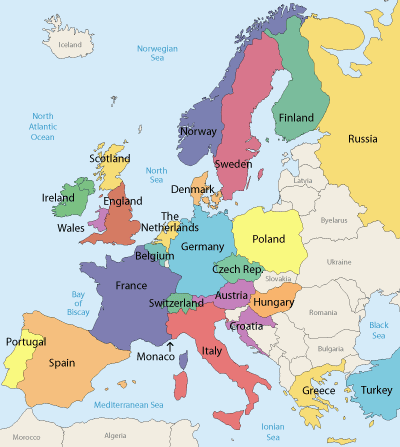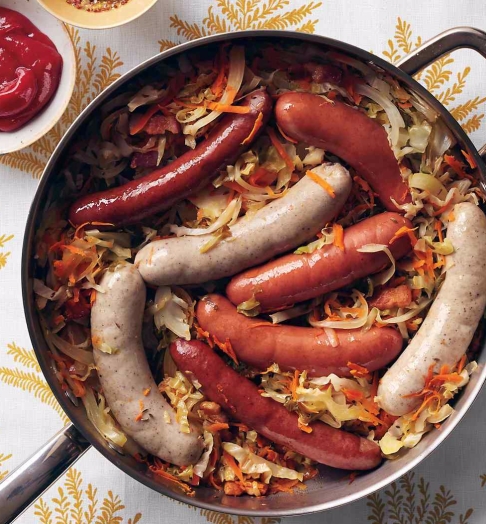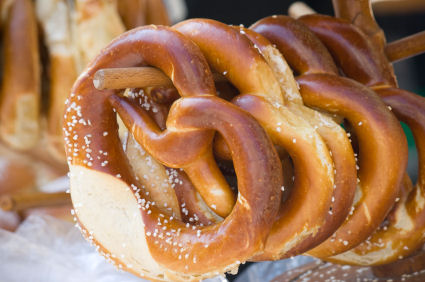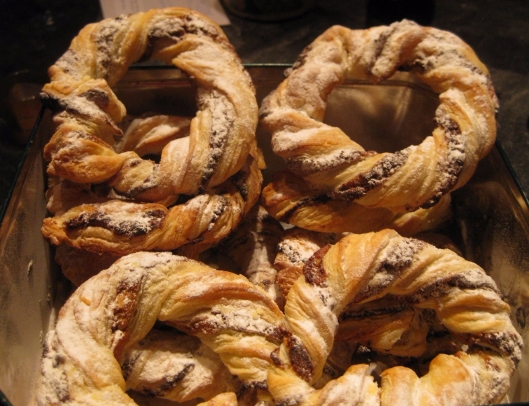Sehr geehrte Studenten!
(My dear students)
What comes to mind when you think of German food? I’m serious, stop and think about it for a second before you keep reading.
If you’re like me, when it comes to European countries famous for their food culture, I usually think of Italy, France, or even Britain! French breads and pastries, Italian pastas and seafood, and British roasts all come to mind before German foods. However, since moving here I’ve learned just how amazing and diverse the foods of Germany can be. I’ll take you through some of the most important ones, as well as some of my personal favorites.

Let’s look at the map of Europe again to understand some reasons for Germany’s food styles. Because Germany is in such a central location, much of its cuisine is influenced by its neighbors. In the west, the cuisine shares many elements with France, especially when it comes to breads and wine. Eastern Germany has many elements of Slavic (eastern European) foods, like hearty soups and dumplings. Northern Germany (the only part of the country on the ocean) uses tons of fish and seafood, as well as fruits with meat as is very common in places like Denmark and Norway. Lastly, the south. The south is very different, as its southern neighbors (Switzerland and Austria) are Germanic countries. The south of Germany is the heart of Germany’s most uniquely authentic and famous foods.
With that in mind, I’ll take you through some of the most important aspects of German cuisine.
Frühstück – Breakfast
(Froo-stook)
The most important meal of the day! Well, not in Germany. In Germany, breakfast is a very light meal. Nowadays with our fast-paced lives during the week, many people will have granola bars, cereal, and stuff like that on their way to work/school. However, families will typically have a traditional breakfast together on the weekends.

Mittagessen – Lunch
(Mit-tog-essen)
Germans are very health conscious, and lunch is also light. It is usually just a snack from a bakery or cafe with coffee.
Abendessen – Dinner
(Ah-bend-essen)
Now for the fun stuff. Dinner is the main meal of the day, and usually the only warm meal of the day. I’ll take you through some of my favorite traditional dishes from my region.




Bäckereien – Bakeries
(Baker-eye-in)
Germans love their bakeries and baked goods. There are bakeries on every block in Germany, and walking by in the mornings you can smell all of the fresh-baked treats. Here are some things you will see in every German bakery!




What do you think of German foods and baked goods? Which of these would you like to try the most? What common themes do you notice in German cuisine? How is German cuisine different from American? A lot of these things can be easily made at home, so if anyone is brave I would love to see someone attempt one of these!
I have good news regarding our final celebration in January! My girlfriend is a wonderful cook and baker, and she loves German cooking. Please tell me what kind of dishes you guys would like to try, and I can ask her very nicely to make us some German goodies for our party. We’ll definitely have pretzels, but if you guys are interested in others things, let me know!
Tschüss! Bis Freitag!
(Bye! ‘Til Friday!)
-GV

does burger king have hot dog just curious like gorge lol
LikeLike